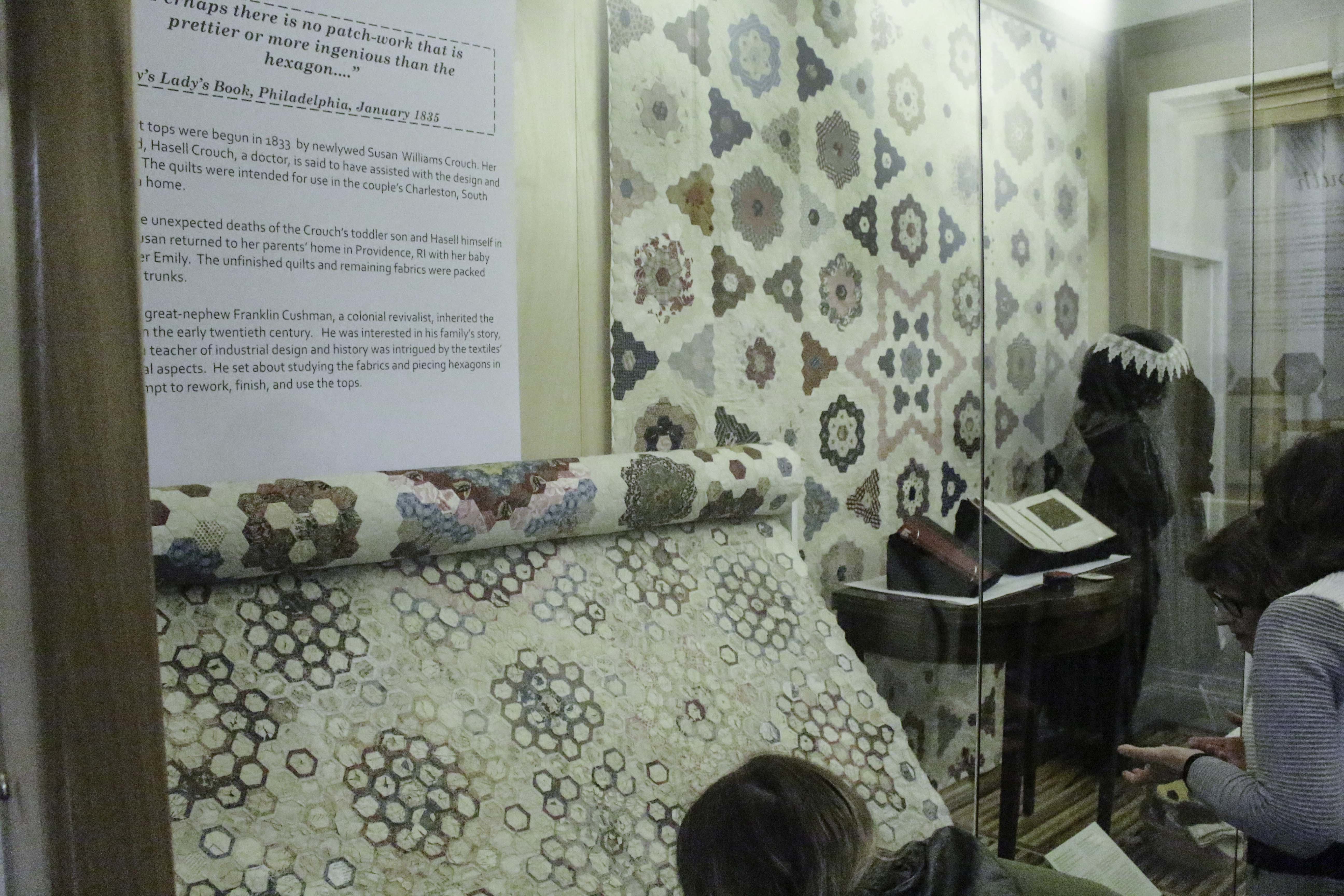The collection will feature clothing, quilts and more
Quilts, clothing and other objects of a family from the mid 19th century are on display as part of the university’s Costume Collection. | Photo by James McIntosh.
Last Monday, the Costume Collection in Quinn Hall debuted their new exhibit, “One American Family: A Tale of North and South,” presenting a collection of clothing, quilts and objects centered around alumni Dr. Rachel May’s book, “An American Quilt.”
Adjunct Instructor Rebecca Kelly and Susan J. Jerome, collections manager for Historic Textile and Costume Collection, are the curators of the exhibit. The two have been working diligently with graduate students to prepare items from a Rhode Island family’s personal collection which was donated to the University of Rhode Island’s Costume Collection.
The exhibit showcases one specific family’s items, garments and tools used between many generations, quilts, sewing tools, photographs, watercolors and swatch books that originally inspired May’s book.
On the exhibition’s opening night, a reception was held in the lobby of Quinn Hall, where refreshments were available and students and other interested community members were able to walk through the exhibit.
Mariela Aguero, a graduate student who worked on the exhibit, said that the exhibit focuses on spreading awareness on the connections linked between industries in the North, slavery in the North and South, the communication of classes using wealth to buy commodities and issuing their wealth to buy from salves.
“We want to let people know that these topics are hard to talk about but we wanted to say something about them because we’re in the contemporary era,” Aguero said. “We understand that these pieces come from middle class families but were made possible through slavery and being from the North we need to acknowledge that it still happened.”
Aguero said that she hopes students take away how far the fashion industry has come so far.
“Imagine what these people did, where they lived, and what the story is behind the pieces, especially in regards to slavery,” Aguero said.
After the opening reception, attendees moved to the Quinn Hall auditorium where Kelley and Linda Welters, a department of textiles, fashion merchandising and design (TMD) professor, spoke on the backstory of the exhibit and the work that went into putting on the event.
Aguero said that the six graduate students, including herself, both curators and other TMD instructors that helped them with different aspects of the exhibit, spent a year in total putting together the show. Kelley, who led the group of graduate students’ class, described her team of six students as “small but mighty” and said that she is very proud of the hard work they put into making the exhibit.
“I’ve really pushed my students into the deep end of the pool with this project and they have really risen to the challenge,” Kelley said.
Along with the backstory of the work and exhibit, Kelley spoke on the difficulties she and her students faced.
“These pieces date to the early to mid-19th century so they were really delicate and students were presented with difficult questions such as how to handle the fabrics, repair [and] stitch fragile materials together, and how to make them strong enough to hang in the gallery from April to December,” Kelley said.
To help with the project, the group used earth magnets for the installation system, which helped the quilts and garments to stay safe.
“We’re really want to thank our friend and alumni at the RISD museum for the earth magnets,” Kelley said. “It was a really great opportunity to experiment with this process.”
The exhibit will be open until Dec. 6, 2019. On Sept. 28, 2019, the University will hold a conference in addition about the exhibit. At the conference, invited speakers will address the connection between southern cotton plantations and the northern textile industry, which depended on an economy based around slavery.





